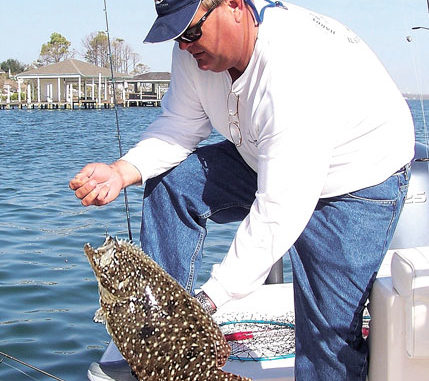
Ambush a flounder in the Murrells Inlet area
The cast went far and long across the mouth of the small gutter creek flowing from the marsh and dumping into Murrells Inlet. To the right side of the gutter, J. Baisch of Fishful Thinking Guide Service had nosed his center-console boat up into the grass and was standing on the rear deck, methodically casting and retrieving.
He could feel the bottom as his bait, a 4-inch Gulp! shrimp rigged on a half-ounce standup jighead, made its way back to the boat. Baisch provided an erratic retrieve in an attempt to attract attention to the bait.
Pop, pop, pop, pop, pop, pop. Then a gentle slide to cover some ground. Pop, pop, pop. There it was.
The bite was solid but easy to confuse with the feel of the bait glancing off an oyster rake — if you were not attuned to the ways of the flounder.
Volumes have been written about how much time should be allowed between when a flounder first strikes your bait and when to set the hook. Notorious slash feeders, flounder will grab a bait to subdue it, then methodically turn it around in their mouths until it is properly positioned for swallowing. How long do you wait for the flounder to get the hook deep enough to stick him?
Baisch skipped all that nonsense and immediately set the hook.
The water erupted in a boil as the flounder, solidly hooked, made a run to escape its captor. The big fish fought hard but was solidly matched by the medium-heavy rod. After two dogged runs that could only be described as “flounder-like”, the fish came to the side of the boat.
The waters of Murrells Inlet are like no other found along the Eastern Seaboard. For its size — and possibly because of its size — a lot of current that moves through the inlet. Close proximity to the ocean turns tides more quickly than in other, bigger inlets and rivers, so there’s rarely any “slack time.”
When the current is moving, it’s hauling butt.
Back in the days when the Grand Strand was a budding summer-vacation spot, Murrells Inlet was THE destination to troll for flounder. Something about the sand and the currents and mud minnows skipping across the bottom made sense to local flounder, and countless flounder-filet sandwiches have borne witness to its productivity.
Trolling is still widely recognized for the numbers of flounder that it puts in coolers, but many younger guides and anglers seem to prefer the “back to the basics” of casting for flatfish, and Baisch is one of these. He’s been a full-time guide for almost nine years, and he said that while trolling accounts for a lot of smaller fish, the larger ones seem to have become wary of the tactic.
“The whole name of the game when flounder-fishing is you have to feel him before he feels you,” said Baisch (843-902-0356). “When a trolled bait comes along, many times the flounder will feel pressure from the boat and let go. People underestimate a flounder’s tendency to school together. They think because they lay on the bottom, it’s just one here and one there. That’s not true; usually when you find a spot that holds one flounder, there will be several.”
Baisch prefers targeting specific ambush points where these fish like to gather. He describes these “seams” where the sand or mud bottom gives way to oyster shell, locations that often warm earlier as spring gives way to summer. As the water warms, flounder will move, and he will target hard corners of tributary creeks and gutters that drain out of the marsh into a larger creek or the inlet.
“On an incoming tide, I fish drop-offs and scour holes created by the tides that go from around five feet, fall off to about eight feet and then rise back up. Flounder love to lay on the inside edges of these holes, facing the direction of the current washing to them,” he said.
Baisch employs two different rigs for flounder. The first is a standard Carolina rig with a 2-foot leader ahead of an egg sinker just heavy enough to maintain contact with the bottom. He foregoes the small float often associated with this rig, but does he opt for a live mud minnow on a 2/0 Kahle hook. The other rig is half-ounce, stand-up jighead tied to a section of 20-pound fluorocarbon leader. The stand-up head allows the hook to ride in the upward position and stay relatively free of obstructions. He threads a 3- or 4-inch Gulp! shrimp in his favorite color, “nuclear chicken,” onto the jighead, which he can pop across the bottom in staccato fashion, then pause and slide the bait. Most of his bites come as the bait settles down after he pops it off the bottom, swimming it in shrimp-fashion.
“The jighead has to be able to stand up so the fish gets the hook on the initial bite,” he said. “I also like the Gulp! shrimp because you can repeatedly cast with it. A mud minnow will be dead after two or three casts, but the shrimp stays lively because of the action I give to it.”
When it comes to boat-positioning, Baisch said that rather than anchor up, he prefers to find a mud bank or sandbar within casting distance and nose the boat up on the bank. He said this gives him a firmer position from which to fish.
“It’s tough enough to feel a bite without having the boat moving around under you, even when anchored” he said. “The firmer the boat position is, the easier it is to tell a bite from just bumping debris on the bottom.”
Another fan of Murrells Inlet flounder in Capt. Shannon Currie of Catch-1 Charters. Like Baisch, he targets flounder holding on ambush points around the edges of sandbars and oyster beds. He may make a number of moves when he’s fishing for flounder in order to stay ahead of the tides.
“The tide changes very quickly in Murrells Inlet because it is so close to the ocean,” he said. “If I’m fishing a spot in Oaks Creek, I’ve got about a 4-hour window before the tide changes, and if I’m fishing the south (back) end of the creek, I need to hurry because it will go almost dry at low tide.”
Murrells Inlet is a popular watersports venue, not only for fishing but joy-riding, parasailing and jet-skiing. Often, the recreational traffic can make it hard to fish inside the inlet. It’s possible to escape some of the traffic by heading out to the jetties that line the mouth of the inlet, which is also a pretty good place to catch larger specimens of flounder.
“I like to anchor up 10 to 15 yards away from the jetties and right to the edge of the rocks,” he said. “You can pick up jumbo mud minnows at some of the bait shops around here, and those bigger baits, or even a small menhaden, will work well for catching big flounder.”
Currie said the “fishing window” at the jetties is shortened to around two hours before the current gets too severe. The best presentation often is to let the bait sit on the bottom in a good location next to the rocks and wait for the flounder to come to you. He ties his Carolina flounder rigs with a float on the leader to keep the bait from swimming into the rocks, and he prefers a 2/0 circle hook.
“Using a circle hook, once the fish has had time to position the bait, all you need to do is tighten up and the hook will set itself,” Currie said. “You can easily snatch the hook away from a flounder by hauling back and trying to set the hook. Just tighten up, and let the hook position itself. You’ll know when he’s on there.”

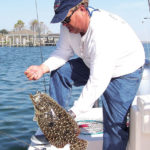
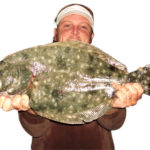
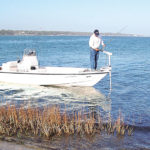
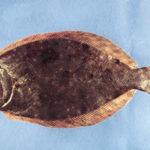
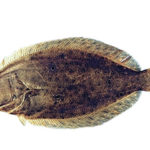
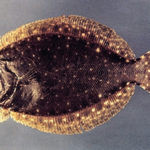
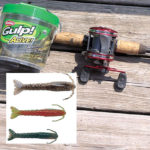



Be the first to comment